 Ontario First Nations leaders warn of ‘conflict on the ground’ if controversial Bill 5 passes. In other Business news: Ontario will spend more for less housing; and Domtar’s penalties at its Skookumchuck mill are reduced by half. Meanwhile: a CLT superstructure is ready to rise in Toronto; Quebec’s first Passive House-certified institutional building; and paper packaging is undergoing a resurgence.
Ontario First Nations leaders warn of ‘conflict on the ground’ if controversial Bill 5 passes. In other Business news: Ontario will spend more for less housing; and Domtar’s penalties at its Skookumchuck mill are reduced by half. Meanwhile: a CLT superstructure is ready to rise in Toronto; Quebec’s first Passive House-certified institutional building; and paper packaging is undergoing a resurgence.
In Forestry/Climate news: Canada’s wildfire season is shaping up to be intense again; California’s tree mortality hits a 10-year low; Europe’s forests are at risk due to drought; the Amazon could survive drought—but at a high cost; trees are said to synchronize their signals during an eclipse; and if a tree falls in the forest—what’s the chance of it being a pine?
Finally, on Day 2 of Forest Safety Awareness Week—articles on PPE programs, musculoskeletal injuries, and steep slope harvesting risks.
Kelly McCloskey, Tree Frog News Editor
 Steep slope harvesting (SSH) enables forestry operations on challenging and often hazardous terrain, allowing access to valuable timber resources. But with this access comes increased risk. From equipment instability to terrain hazards, safe operations on steep ground require a clear understanding of the work environment and strong mitigation strategies.
Steep slope harvesting (SSH) enables forestry operations on challenging and often hazardous terrain, allowing access to valuable timber resources. But with this access comes increased risk. From equipment instability to terrain hazards, safe operations on steep ground require a clear understanding of the work environment and strong mitigation strategies.  Steep slope harvesting can be approached in several ways, each with its own set of challenges and safety considerations. …Steep slope harvesting presents significant risks, but with careful planning, proper equipment, and a culture of safety, these risks can be managed. “Safety is not a one-time effort but an ongoing process that requires daily attention,” says Pawlowski. “By consistently prioritizing hazard assessment, equipment suitability, proper setup, and staying in the clear, employers and workers can minimize risks and help ensure that steep slope harvesting remains a safe and effective method of timber harvesting.”
Steep slope harvesting can be approached in several ways, each with its own set of challenges and safety considerations. …Steep slope harvesting presents significant risks, but with careful planning, proper equipment, and a culture of safety, these risks can be managed. “Safety is not a one-time effort but an ongoing process that requires daily attention,” says Pawlowski. “By consistently prioritizing hazard assessment, equipment suitability, proper setup, and staying in the clear, employers and workers can minimize risks and help ensure that steep slope harvesting remains a safe and effective method of timber harvesting.”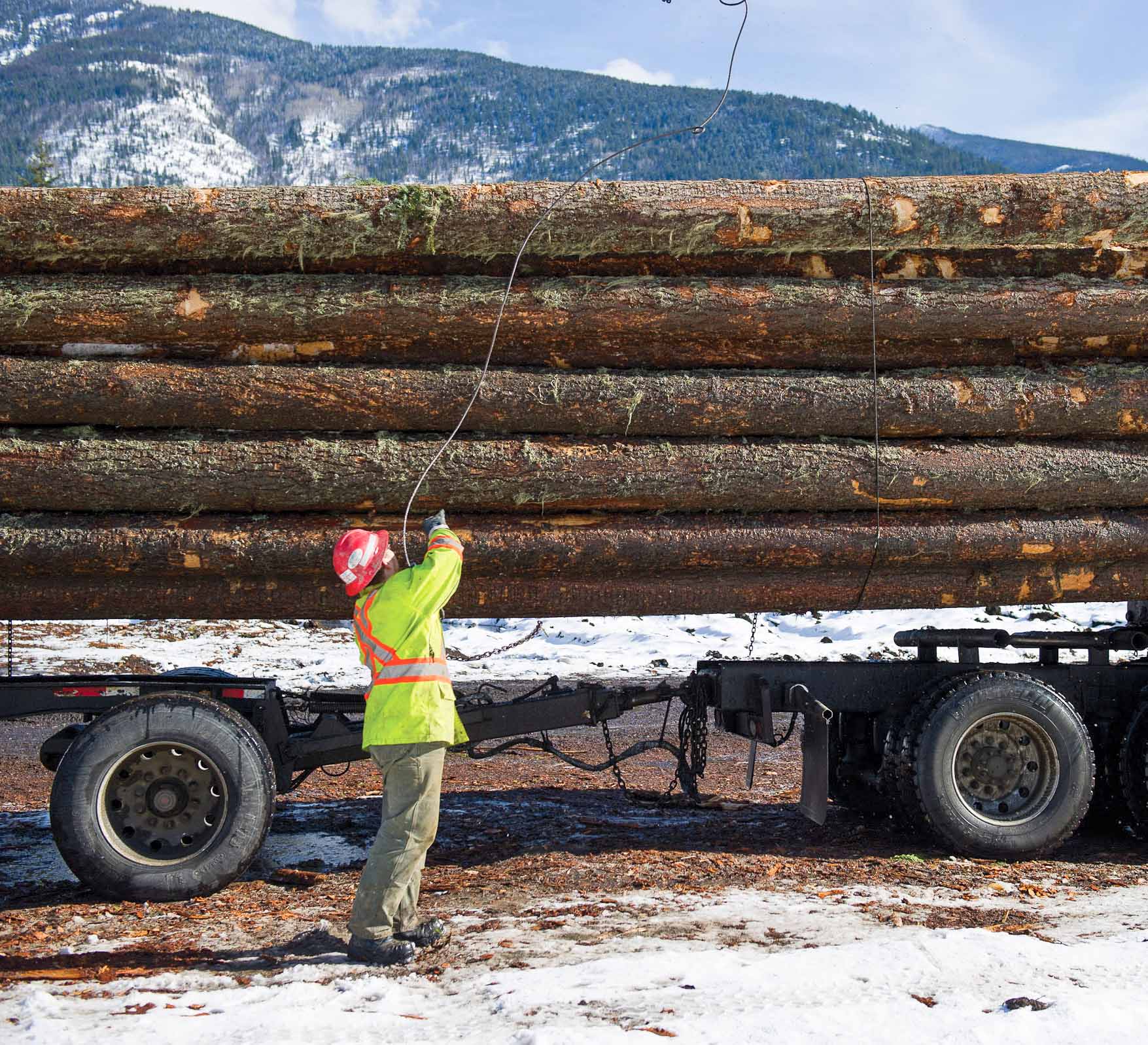 By implementing ergonomic practices, promoting proper body mechanics and fostering a culture of early reporting and prevention, employers and workers can work together to significantly reduce the occurrence and impact of MSIs across the industry. Although musculoskeletal injuries can affect workers across all areas of forestry, certain roles are particularly vulnerable due to the physical demands and repetitive nature of their tasks.
By implementing ergonomic practices, promoting proper body mechanics and fostering a culture of early reporting and prevention, employers and workers can work together to significantly reduce the occurrence and impact of MSIs across the industry. Although musculoskeletal injuries can affect workers across all areas of forestry, certain roles are particularly vulnerable due to the physical demands and repetitive nature of their tasks.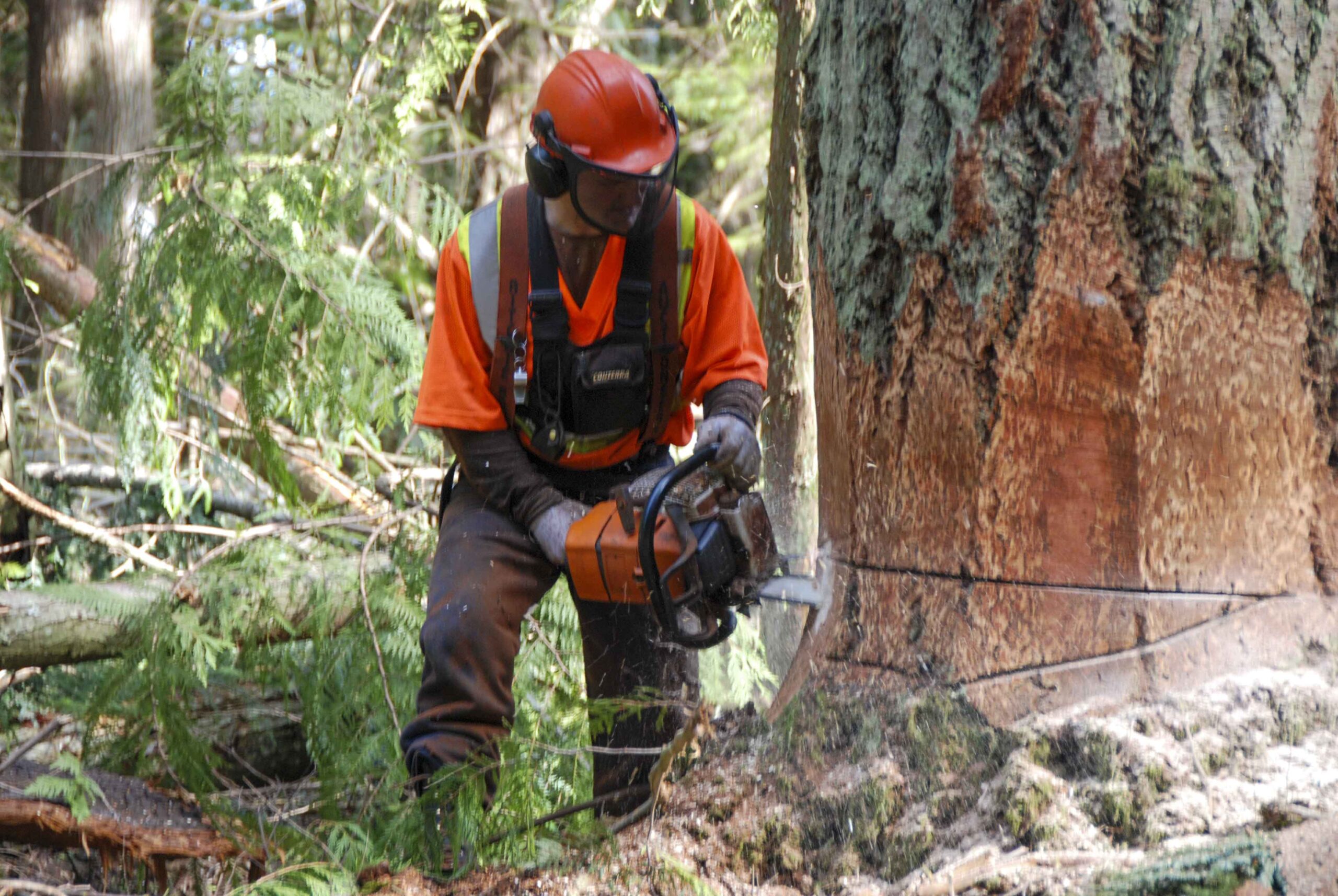 The following focuses on considerations for supervisors and owners when developing a PPE program. Components of a good PPE program include: Regulation Check; Planning; Appropriate Selection; Fitting; Education and Training; Supervisor and Management Support; Inspection and Maintenance; and Auditing the Program. Get all the details by clicking the Read More!
The following focuses on considerations for supervisors and owners when developing a PPE program. Components of a good PPE program include: Regulation Check; Planning; Appropriate Selection; Fitting; Education and Training; Supervisor and Management Support; Inspection and Maintenance; and Auditing the Program. Get all the details by clicking the Read More! Domtar has been penalized $17,200 for nearly two dozen failures to control the release of emissions from its Skookumchuck, BC, mill. The kraft pulp mill was found to have violated pollution levels 23 times over eight months starting in 2021, according to a decision from director of the Environmental Management Act Bryan Vroom. On at least six occasions, the decision found Domtar failed to keep smoke emissions from a wood-waste-fired power boiler below the 40 per cent opacity required under its 2013 permit. …The company disputed the findings, arguing that a nearby air quality impact assessment showed the impacts to human health were “not significant” and that the ministry failed to show the violations would impact workers. In his decision, Environmental Management Act Bryan Vroom responded by reducing the severity of the failures to a level of “low to none.” …Domtar acknowledged the penalties in an email, and said it is working with B.C.’s environment ministry in response.
Domtar has been penalized $17,200 for nearly two dozen failures to control the release of emissions from its Skookumchuck, BC, mill. The kraft pulp mill was found to have violated pollution levels 23 times over eight months starting in 2021, according to a decision from director of the Environmental Management Act Bryan Vroom. On at least six occasions, the decision found Domtar failed to keep smoke emissions from a wood-waste-fired power boiler below the 40 per cent opacity required under its 2013 permit. …The company disputed the findings, arguing that a nearby air quality impact assessment showed the impacts to human health were “not significant” and that the ministry failed to show the violations would impact workers. In his decision, Environmental Management Act Bryan Vroom responded by reducing the severity of the failures to a level of “low to none.” …Domtar acknowledged the penalties in an email, and said it is working with B.C.’s environment ministry in response.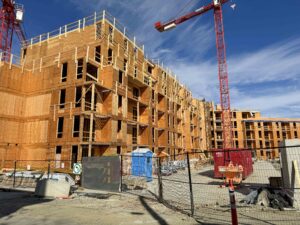 To state the obvious, in Ontario homebuilding is not keeping pace with population growth. This imbalance is driving sky-high home prices and rents, not only in the GTA but many other Ontario cities. What’s to be done? In the Ford government’s recent budget, “housing” appears not as a central theme but as one of several areas to receive “support” in light of Trump’s tariffs, mainly in the form of more money for local infrastructure. …And as part of this “housing” spending spree, the Ford government will continue to spend millions on the Community Infrastructure Fund—which targets smaller communities—and programs to encourage skilled trades, which could support housing development. … The Ontario government has already spent billions on its housing strategy, yet has not moved the needle on housing supply. Even Ford’s new budget with its massive housing “support” includes an abysmal forecast for new home construction.
To state the obvious, in Ontario homebuilding is not keeping pace with population growth. This imbalance is driving sky-high home prices and rents, not only in the GTA but many other Ontario cities. What’s to be done? In the Ford government’s recent budget, “housing” appears not as a central theme but as one of several areas to receive “support” in light of Trump’s tariffs, mainly in the form of more money for local infrastructure. …And as part of this “housing” spending spree, the Ford government will continue to spend millions on the Community Infrastructure Fund—which targets smaller communities—and programs to encourage skilled trades, which could support housing development. … The Ontario government has already spent billions on its housing strategy, yet has not moved the needle on housing supply. Even Ford’s new budget with its massive housing “support” includes an abysmal forecast for new home construction.  Packaging is going back to its roots. Long before the advent of plastics, before the rise of mass production and the widespread adoption of synthetic materials, early civilisations relied on what the natural world had to offer – pressed bark, woven plant fibres, and rudimentary pulps – to store and transport food and goods. Paper, in particular, has long served as a trusted material for containment and communication alike. Today, that ancient material is undergoing a resurgence and is evolving to not only meet contemporary functional needs but also to respond to an urgent call for environmental responsibility. The rapid shift away from single-use plastic has created new momentum behind paper-based alternatives. From luxury goods wrapped in soft textured, bespoke papers to barrier coated containers engineered for performance and recyclability, fibre-based packaging is no longer confined to brown boxes or rustic aesthetics. It is becoming more refined, more versatile, and, crucially, more sustainable – at least on the surface.
Packaging is going back to its roots. Long before the advent of plastics, before the rise of mass production and the widespread adoption of synthetic materials, early civilisations relied on what the natural world had to offer – pressed bark, woven plant fibres, and rudimentary pulps – to store and transport food and goods. Paper, in particular, has long served as a trusted material for containment and communication alike. Today, that ancient material is undergoing a resurgence and is evolving to not only meet contemporary functional needs but also to respond to an urgent call for environmental responsibility. The rapid shift away from single-use plastic has created new momentum behind paper-based alternatives. From luxury goods wrapped in soft textured, bespoke papers to barrier coated containers engineered for performance and recyclability, fibre-based packaging is no longer confined to brown boxes or rustic aesthetics. It is becoming more refined, more versatile, and, crucially, more sustainable – at least on the surface.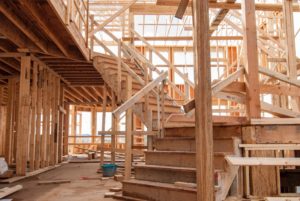 The new La Pêche Town Hall, built on a promontory facing Route Principale, is a mass timber, highly energy-efficient building that will soon become the first Passive House-certified institutional building in Quebec. Rectangular in shape and located on an east-west axis, the building, by BGLA architecture + urban design, features a long façade which faces directly south onto the main road. This façade offers views of the hills of Gatineau Park from the inside, while also using natural solar gain to serve as the building’s primary heating source. The presence of wood is felt inside and outside the project. Eastern cedar cladding envelops all the façades, while the glulam and cross-laminated timber structure is exposed and highlighted in each of the interior spaces.
The new La Pêche Town Hall, built on a promontory facing Route Principale, is a mass timber, highly energy-efficient building that will soon become the first Passive House-certified institutional building in Quebec. Rectangular in shape and located on an east-west axis, the building, by BGLA architecture + urban design, features a long façade which faces directly south onto the main road. This façade offers views of the hills of Gatineau Park from the inside, while also using natural solar gain to serve as the building’s primary heating source. The presence of wood is felt inside and outside the project. Eastern cedar cladding envelops all the façades, while the glulam and cross-laminated timber structure is exposed and highlighted in each of the interior spaces.
 Global efforts to curb greenhouse gas (GHG) emissions are accelerating across industries, and the construction sector is no exception. With buildings responsible for a significant portion of global emissions, sustainable alternatives have come under intense scrutiny. Cross-laminated timber (CLT) has emerged as a promising substitute that not only reduces the carbon footprint associated with conventional materials like steel and concrete, but also contributes to long-term carbon storage. However, as CLT gains traction in mid- and high-rise construction, its full environmental impact—both positive and negative—must be understood. In a recent study, researchers combined economic modeling with a cradle-to-grave life-cycle assessment (LCA) to capture the comprehensive climate mitigation potential of CLT. This interdisciplinary framework was designed to quantify both the direct emissions benefits of material substitution and the broader market and ecological reactions that come into play when CLT adoption accelerates.
Global efforts to curb greenhouse gas (GHG) emissions are accelerating across industries, and the construction sector is no exception. With buildings responsible for a significant portion of global emissions, sustainable alternatives have come under intense scrutiny. Cross-laminated timber (CLT) has emerged as a promising substitute that not only reduces the carbon footprint associated with conventional materials like steel and concrete, but also contributes to long-term carbon storage. However, as CLT gains traction in mid- and high-rise construction, its full environmental impact—both positive and negative—must be understood. In a recent study, researchers combined economic modeling with a cradle-to-grave life-cycle assessment (LCA) to capture the comprehensive climate mitigation potential of CLT. This interdisciplinary framework was designed to quantify both the direct emissions benefits of material substitution and the broader market and ecological reactions that come into play when CLT adoption accelerates. In Sequoia and Kings Canyon National Parks in California, trees that have persisted through rain and shine for thousands of years are now facing multiple threats triggered by a changing climate. Scientists and park managers once thought giant sequoia forests nearly impervious to stressors like wildfire, drought and pests. Yet, even very large trees are proving vulnerable, particularly when those stressors are amplified by rising temperatures and increasing weather extremes. The rapid pace of climate change – combined with threats like the spread of invasive species and diseases – can affect ecosystems in ways that defy expectations based on past experiences… To protect these places, which are valued for their natural beauty and the benefits they provide for recreation, clean water and wildlife, forest and land managers increasingly must anticipate risks they have never seen before. And they must prepare for what those risks will mean for stewardship as ecosystems rapidly transform.
In Sequoia and Kings Canyon National Parks in California, trees that have persisted through rain and shine for thousands of years are now facing multiple threats triggered by a changing climate. Scientists and park managers once thought giant sequoia forests nearly impervious to stressors like wildfire, drought and pests. Yet, even very large trees are proving vulnerable, particularly when those stressors are amplified by rising temperatures and increasing weather extremes. The rapid pace of climate change – combined with threats like the spread of invasive species and diseases – can affect ecosystems in ways that defy expectations based on past experiences… To protect these places, which are valued for their natural beauty and the benefits they provide for recreation, clean water and wildlife, forest and land managers increasingly must anticipate risks they have never seen before. And they must prepare for what those risks will mean for stewardship as ecosystems rapidly transform.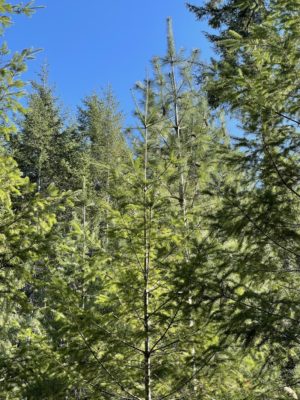 If you’re wondering why squirrels seem to vastly outnumber raccoons—or why certain car brands dominate city streets—a team of University of Virginia researchers may be able to help. Some species are abundant while most are rare. For nearly a century, scientists have sought a mathematical model to describe this pattern, the “hollow curve” species-abundance distribution, found universally within ecological communities. A recent breakthrough by a team within UVA’s Department of Biology seems to have finally cracked this ecological puzzle. By analyzing 30,000 datasets ranging from the distribution of tree species across the United States to bacterial communities living in the human gut, they found that a model called the “powerbend distribution” accurately describes the species abundance across plant, animal and microbial communities. Their findings were
If you’re wondering why squirrels seem to vastly outnumber raccoons—or why certain car brands dominate city streets—a team of University of Virginia researchers may be able to help. Some species are abundant while most are rare. For nearly a century, scientists have sought a mathematical model to describe this pattern, the “hollow curve” species-abundance distribution, found universally within ecological communities. A recent breakthrough by a team within UVA’s Department of Biology seems to have finally cracked this ecological puzzle. By analyzing 30,000 datasets ranging from the distribution of tree species across the United States to bacterial communities living in the human gut, they found that a model called the “powerbend distribution” accurately describes the species abundance across plant, animal and microbial communities. Their findings were  The rate at which trees are dying in California has hit a 10-year low, according to a survey from the U.S. Forest Service. Trees were dying at an alarming rate from 2015 to 2018, but after significant snow and rainfall in recent years, trees are getting their necessary nutrients. “We’ve had a couple good years of precipitation,” said Jeffrey Moore, aerial survey manager with the Forest Service. “We expected the amount of mortality to start tapering off, and indeed that was the case.” Severe droughts, he says, are the main culprits for the amount of trees that die. Less water means fewer nutrients, which then allows for a greater chance of trees to get disease or infected with bugs that feed on dry bark.
The rate at which trees are dying in California has hit a 10-year low, according to a survey from the U.S. Forest Service. Trees were dying at an alarming rate from 2015 to 2018, but after significant snow and rainfall in recent years, trees are getting their necessary nutrients. “We’ve had a couple good years of precipitation,” said Jeffrey Moore, aerial survey manager with the Forest Service. “We expected the amount of mortality to start tapering off, and indeed that was the case.” Severe droughts, he says, are the main culprits for the amount of trees that die. Less water means fewer nutrients, which then allows for a greater chance of trees to get disease or infected with bugs that feed on dry bark.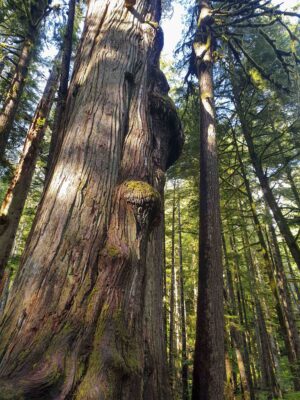 Thousands of acres of deep-woods habitats at Arcadia Dunes are now part of a nationwide network of current and future old-growth forests. The wooded areas at the C.S. Mott Nature Preserve in Benzie County this week became the latest place in Michigan to be inducted into the Old-Growth Forest Network, which now includes more than 270 permanently protected forests nationwide. The forest near the Lake Michigan shoreline boasts unique microclimates teeming with old beech and hemlock trees, spring wildflowers, and rare native plants. Grand Traverse Regional Land Conservancy hosted a two-mile hike Wednesday, May 21, along the preserve’s Dryhill Trail Chestnut Loop to celebrate the northern mesic forest being added to the nationwide old-growth roster. The nature preserve is the conservancy’s largest and includes a mix of secondary hardwoods, coastal dunes, and open fields around old farmland and pastures.
Thousands of acres of deep-woods habitats at Arcadia Dunes are now part of a nationwide network of current and future old-growth forests. The wooded areas at the C.S. Mott Nature Preserve in Benzie County this week became the latest place in Michigan to be inducted into the Old-Growth Forest Network, which now includes more than 270 permanently protected forests nationwide. The forest near the Lake Michigan shoreline boasts unique microclimates teeming with old beech and hemlock trees, spring wildflowers, and rare native plants. Grand Traverse Regional Land Conservancy hosted a two-mile hike Wednesday, May 21, along the preserve’s Dryhill Trail Chestnut Loop to celebrate the northern mesic forest being added to the nationwide old-growth roster. The nature preserve is the conservancy’s largest and includes a mix of secondary hardwoods, coastal dunes, and open fields around old farmland and pastures.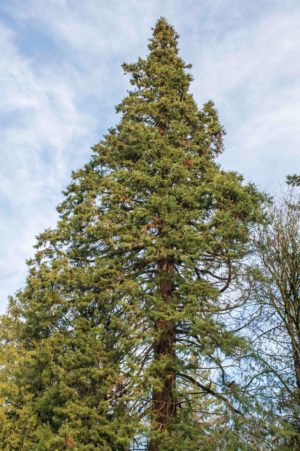 More evidence that trees display group cognition and communication has arrived from the Dolomites where a multidisciplinary team monitored a forest during a solar eclipse. Their research witnessed two things, that the trees of the forest synchronized bioelectrical activity during the eclipse, and that the process of synchronization was started and directed by the eldest trees—a full 14 hours before the eclipse even started. The results of their experiment, which
More evidence that trees display group cognition and communication has arrived from the Dolomites where a multidisciplinary team monitored a forest during a solar eclipse. Their research witnessed two things, that the trees of the forest synchronized bioelectrical activity during the eclipse, and that the process of synchronization was started and directed by the eldest trees—a full 14 hours before the eclipse even started. The results of their experiment, which  Centuries ago, around 80% of Ireland’s green landscape was covered in trees – many of which were hundreds of years old. The arrival of modern agriculture changed that now less than 1% of the island is covered by ancient woodland. The Government hopes to reverse this historic trend and is aiming to cover 18% of the State in trees by 2050. Businesses are getting involved as well; Wolfman Digital bought a plot of land seven-years ago and staff were bussed out to plant trees on it. “Back in 2017, we decided we wanted to become carbon neutral,” CEO Alan Coleman said. “We were looking into our different options and we learnt three things about forests that really made us feel strongly that we wanted to start planting trees. “The first thing we learnt is that forestry is one of the strongest solutions to global warming.”
Centuries ago, around 80% of Ireland’s green landscape was covered in trees – many of which were hundreds of years old. The arrival of modern agriculture changed that now less than 1% of the island is covered by ancient woodland. The Government hopes to reverse this historic trend and is aiming to cover 18% of the State in trees by 2050. Businesses are getting involved as well; Wolfman Digital bought a plot of land seven-years ago and staff were bussed out to plant trees on it. “Back in 2017, we decided we wanted to become carbon neutral,” CEO Alan Coleman said. “We were looking into our different options and we learnt three things about forests that really made us feel strongly that we wanted to start planting trees. “The first thing we learnt is that forestry is one of the strongest solutions to global warming.”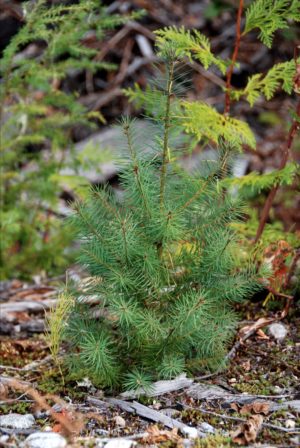 The future of the European forests is at risk due to our changing climate. To observe the effects of climate change, we often look at the large trees. But the young trees are the future of the forest and are also the most vulnerable. The current drought is the biggest threat to young trees. A recent study
The future of the European forests is at risk due to our changing climate. To observe the effects of climate change, we often look at the large trees. But the young trees are the future of the forest and are also the most vulnerable. The current drought is the biggest threat to young trees. A recent study 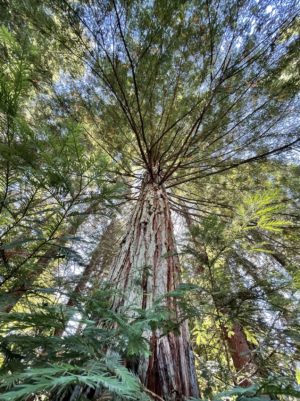 BRUSSELS – According to a document obtained by, 11 governments are urging the European Union to delay or weaken its upcoming deforestation law. This policy, a world first, aims to stop the 10% global deforestation caused by EU imports of soy, beef and palm oil, among other products. However, it has become a controversial part of Europe’s environmental agenda. After complaints from Brazil and the US and a reduction in reporting rules, the EU has already delayed its launch for a year, until Dec. 2025. The Commission announced last week that it would spare most countries from the strictest checks. A group of eleven countries led by Austria, Luxembourg and Germany, have demanded that the European Commission further simplify the rules and delay the application date. …The countries’ paper, that the EU agriculture ministers in Brussels will be discussing on Monday, said the requirements are “disproportionate” to the regulation’s goal.
BRUSSELS – According to a document obtained by, 11 governments are urging the European Union to delay or weaken its upcoming deforestation law. This policy, a world first, aims to stop the 10% global deforestation caused by EU imports of soy, beef and palm oil, among other products. However, it has become a controversial part of Europe’s environmental agenda. After complaints from Brazil and the US and a reduction in reporting rules, the EU has already delayed its launch for a year, until Dec. 2025. The Commission announced last week that it would spare most countries from the strictest checks. A group of eleven countries led by Austria, Luxembourg and Germany, have demanded that the European Commission further simplify the rules and delay the application date. …The countries’ paper, that the EU agriculture ministers in Brussels will be discussing on Monday, said the requirements are “disproportionate” to the regulation’s goal.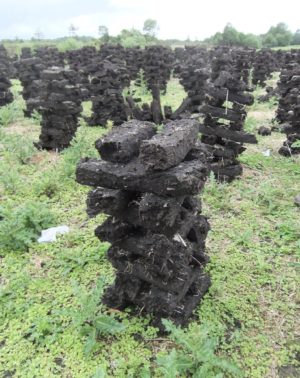 A love of the outdoors and a deep desire to make a meaningful impact on communities affected by climate change keeps Greg Verkaik going back to Western Canada. The PhD student studies peatlands and their role in wildfires. Climate change isn’t an abstract concept in his research, it’s something he’s been seeing and experiencing in the landscapes he’s visited since 2018 as part of this work. The 2025 wildfire season is already shaping up to be another intense year for Canada. Early signs point to another active and dangerous season, particularly in Western Canada. As peatlands dry and fire seasons lengthen, the risk of deep-burning, smouldering fires – the kind that can persist underground and reignite months later, continues to grow. This only strengthens Verkaik’s commitment to his research, which aims to better understand how peatlands influence wildfire behaviour and how they might be managed to reduce risk.
A love of the outdoors and a deep desire to make a meaningful impact on communities affected by climate change keeps Greg Verkaik going back to Western Canada. The PhD student studies peatlands and their role in wildfires. Climate change isn’t an abstract concept in his research, it’s something he’s been seeing and experiencing in the landscapes he’s visited since 2018 as part of this work. The 2025 wildfire season is already shaping up to be another intense year for Canada. Early signs point to another active and dangerous season, particularly in Western Canada. As peatlands dry and fire seasons lengthen, the risk of deep-burning, smouldering fires – the kind that can persist underground and reignite months later, continues to grow. This only strengthens Verkaik’s commitment to his research, which aims to better understand how peatlands influence wildfire behaviour and how they might be managed to reduce risk.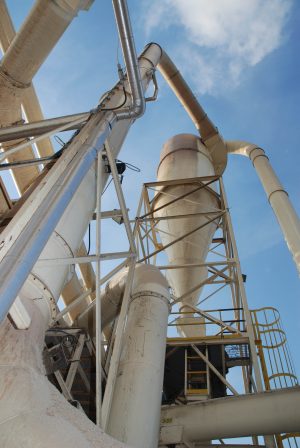 Mineral water producer Gerolsteiner Brunnen has broken ground on a new biomass combined heat and power (CHP) plant at its site in the Vulkaneifel region, Germany, in partnership with energy provider E.ON. The plant is set to significantly reduce the company’s reliance on fossil fuels and further its long-standing commitment to climate protection. Once operational in early 2027, the plant will supply up to 95% of Gerolsteiner’s heat demand and around 20% of its electricity needs. It will run on regionally sourced biomass, including wood chips from damaged or diseased wood, forest residues, and green waste, that would otherwise go unused in traditional wood processing industries… The project is expected to reduce the company’s carbon emissions by over 7,000 tonnes annually.
Mineral water producer Gerolsteiner Brunnen has broken ground on a new biomass combined heat and power (CHP) plant at its site in the Vulkaneifel region, Germany, in partnership with energy provider E.ON. The plant is set to significantly reduce the company’s reliance on fossil fuels and further its long-standing commitment to climate protection. Once operational in early 2027, the plant will supply up to 95% of Gerolsteiner’s heat demand and around 20% of its electricity needs. It will run on regionally sourced biomass, including wood chips from damaged or diseased wood, forest residues, and green waste, that would otherwise go unused in traditional wood processing industries… The project is expected to reduce the company’s carbon emissions by over 7,000 tonnes annually.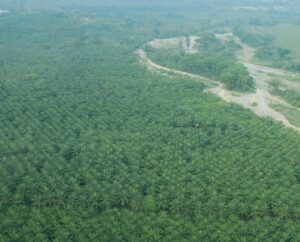 When I hear discussions about creating markets to “save nature,” a part of me is hopeful, but a bigger part is deeply cautious. Looking at how these market ideas have played out, like carbon markets, gives me pause. Forests, wetlands, and the natural world are not simple spreadsheets; treating them as such can lead us down a perilous path… Carbon, as CO2, is a global pollutant. A tonne reduced in one place has, theoretically, the same atmospheric impact as a tonne reduced elsewhere.This (imperfect) fungibility is what would allow a global carbon market to function. Biodiversity, however, is the epitome of diversity, local and unique. The specific mix of species, the genetic diversity and the intricate ecological relationships that define a patch of old-growth rainforest in the Amazon are utterly different from those in a Scottish pine forest or an Indonesian mangrove. You cannot swap one for the other and claim equivalence.
When I hear discussions about creating markets to “save nature,” a part of me is hopeful, but a bigger part is deeply cautious. Looking at how these market ideas have played out, like carbon markets, gives me pause. Forests, wetlands, and the natural world are not simple spreadsheets; treating them as such can lead us down a perilous path… Carbon, as CO2, is a global pollutant. A tonne reduced in one place has, theoretically, the same atmospheric impact as a tonne reduced elsewhere.This (imperfect) fungibility is what would allow a global carbon market to function. Biodiversity, however, is the epitome of diversity, local and unique. The specific mix of species, the genetic diversity and the intricate ecological relationships that define a patch of old-growth rainforest in the Amazon are utterly different from those in a Scottish pine forest or an Indonesian mangrove. You cannot swap one for the other and claim equivalence. The Amazon rainforest may be able to survive long-term drought caused by climate change, but adjusting to a drier, warmer world would exact a heavy toll, according to new research in which Cardiff University played a role. The findings show adapting to the effects of climate change could see some parts of the Amazon rainforest lose many of its largest trees, releasing carbon stored in them to the air, and reducing the rainforest’s carbon sink capacity. Parts of the Amazon are expected to become drier and warmer as the climate changes, but long-term effects on the region’s rainforests – which span more than 2 million square miles – are poorly understood. Previous research has raised concerns that a combination of severe warming and drying, together with deforestation, could lead to lush rainforest degrading to a sparser forest or even savanna.
The Amazon rainforest may be able to survive long-term drought caused by climate change, but adjusting to a drier, warmer world would exact a heavy toll, according to new research in which Cardiff University played a role. The findings show adapting to the effects of climate change could see some parts of the Amazon rainforest lose many of its largest trees, releasing carbon stored in them to the air, and reducing the rainforest’s carbon sink capacity. Parts of the Amazon are expected to become drier and warmer as the climate changes, but long-term effects on the region’s rainforests – which span more than 2 million square miles – are poorly understood. Previous research has raised concerns that a combination of severe warming and drying, together with deforestation, could lead to lush rainforest degrading to a sparser forest or even savanna.